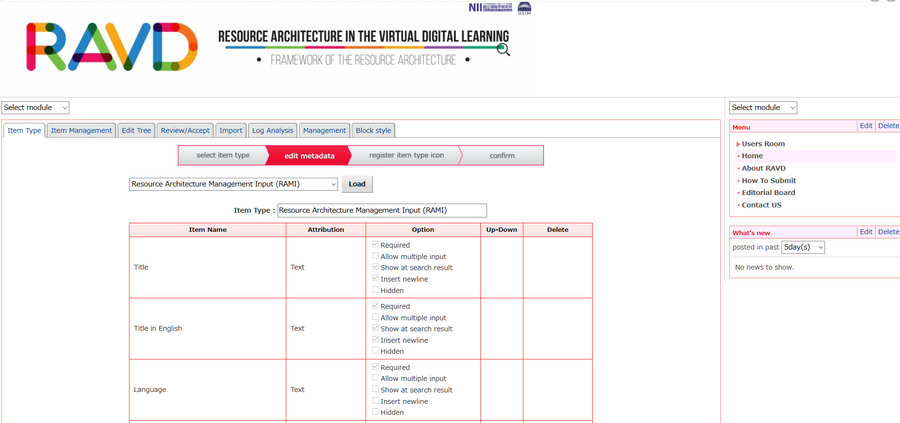As technology becomes pervasive, the teaching and learning landscape is now capable of presenting an interoperable and seamless learning architecture to connect, integrate, and share learning resources. Although we have a plethora of learning resources, searching for specific content is not easy and takes time to view and identify the content being searched. As such a tagging metadata mechanism is envisaged that will facilitate for content search. The tagging of these learning objects will lead to an intelligent virtual content selection environment that will facilitate for any content to be searched based on each of the elements of learner, subject, pedagogy and technology via the Resource Architecture Metadata Input (RAMI). Ultimately, a content directory is envisaged to accentuate the digital learning landscape resulting in the Resource Architecture in the Virtual Design environment (RAVD).
This product is designed by Prof. Dr. Rozhan M. Idrus as a lead researcher and Mr. Mohamad Faiz Taip, the Information Technology Officer at the Global Open Access Learning – Immersive Technology & Quality Assurance (GOAL-ITQAN) in USIM for assistance in the discussion and layout of the resource architecture.
A metadata input format has been designed to provide the information of the content and also at the same time, presents to the contributor a content design framework that is based on technology; the four elements of content, learner, pedagogy and technology. This design framework will be converted into an application that can be marketed and copyrighted (in process).
The purpose of this project is to show how Resource Architecture Metadata Input (RAMI) on learning materials were developed adopting a Japanese open source software, called WEKO. The design approach is based on a pull to push strategy whereby metadata of scholarly open access materials are kept within the institution and network communities digital databases were harvested using the Open Archives Initiatives Protocol for Metadata Harvesting (OAI-PMH) method into another open knowledge platform for discovery by other users. This endeavour is currently in an international collaboration with the National Institute of Informatics (NII), Japan for the development of a platform and support in migration and to the end-user community: http://usim.at.nii.ac.jp/. It is envisaged that the RAVD and RAMI will enhance content search and populate a well- defined content design for the digital educational landscape.
Besides conventional publications such as video, audio, student project, conference proceedings and journal articles, various supplemental data will be published and shared on this site. One of the goals of this service is to bring together academic societies and the open science activities, then make larger the Internet academic community.
Adding values over the content of repositories:
1. Portal services of repositories based on Resource Architecture Metadata Input (RAMI)
2. Statistics and evaluation
3. Support tools
The team hope The Resource Architecture for the Virtual Digital Learning Landscape will now make content from any database searchable based on the tagged parameters. Futher, this give rise to an oppurtunity for customisation of the resource in terms of activities and different languages as well the re-modification or re-purpose and re-use of content that will lead to the enrichment of the repository.
Keywords: Technology, Resources Architecture, Ubiquitous Framework
Team members:
Prof. Dr. Rozhan M. Idrus
Professor of ODL & Technology
Dean of Centre for Graduate Studies
Mr. Mohamamad Faiz Taip
Information Technology Officer
Global Open Access Learning-Immersive Technology & Quality Assurance (GOAL-ITQAN)








